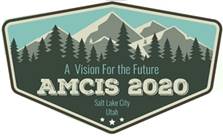Loading...
Abstract
With the outbreak of the Covid-19 pandemic, almost all the school programs in the United States are closed. Most of the educational programs moved online. Both teachers and students have been facing great challenges adapting to this new teaching and learning mode. This paper will focus on the aesthetic design of web-based educational platforms for students and teachers from elementary school and middle school. Students from elementary school and middle school usually age from 5 to 13 years old. Their computer literacy level is still preliminary. So traditional online teaching platforms are not a good fit for them. In the meantime, there are many educational apps designed for kids at this age. However, most apps usually only provide contents for them to watch or interact with fingers, without a real teacher real-time online to teach them. Real-time online teaching started to grow commercially in the past few years, but not so much in traditional public schools. Meeting tools like Zoom, Google Meet are great applications for college students or high school students with better computer literacy. For the younger students, web designers need to give more thoughts. This paper will propose aesthetic design guidelines for educational platforms specifically for younger students and their teachers. In order to provide the best learning experience for younger students and best teaching experience for their teachers, we will first investigate users’ characteristics by surveying young students in different age groups from local public schools. The survey will focus on color preferences, thematic interests and interaction modes, etc. Teachers will be surveyed too to find out major challenges with online teaching. Apart from surveying users, we also need to study the curriculum currently in use in most elementary schools and middle schools. Based on what contents will be taught, we will find the best way to deliver to students. Existing developmental psychological theories will provide guidelines for young students’ preferences in aesthetics. Current popular applications and platforms will be compared to find out what we can improve. And we also realize that this pandemic is temporary, we positively believe this will be over soon and students will resume school physically in the fall semester. Designing web-based educational platforms will not become irrelevant until then. Most school classrooms here in the United States have smartboards, and students can even get iPad or other tablets from school. Multi-media educational applications have been in use for years. We want to provide aesthetic guidelines for educational platforms not only for online teaching but also for students in classroom.
Recommended Citation
He, Lurong and Nah, Fiona, "Interface Design of Web-based Educational Platforms for Young Students" (2020). AMCIS 2020 TREOs. 91.
https://aisel.aisnet.org/treos_amcis2020/91
Abstract Only
When commenting on articles, please be friendly, welcoming, respectful and abide by the AIS eLibrary Discussion Thread Code of Conduct posted here.


